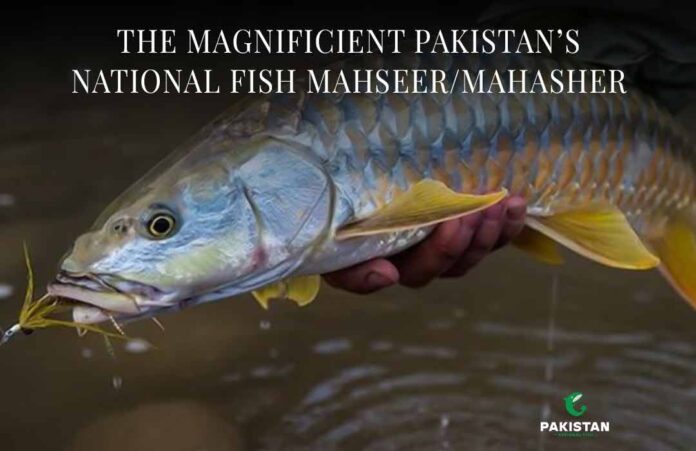Mahseer fish live in the semi-cold waters found in every province of Pakistan. Another name for it is “King of Swat”. Pakistan is a wonderful country and is where you may find Mahseer. This fish is the national fish of Pakistan. Mahseers, also known as Himalayan or Golden Mahasher, are coveted food and crucial game fish for Pakistan’s economy. Fishing freshwater in Pakistan, Mahseer can enjoy one of the nicest experiences worldwide. Mahseers have been very important to local Pakistani fisherman due to their size, high commercial value, golden look, and long shelf life.
Characteristics of Mahseer Fish: National Fish of Pakistan
- Large, powerful fish with impressive size and strength.
- Habitat: thrives in fast-flowing, clear rivers and streams, often found in cold, oxygen-rich waters of the Himalayan region.
- Appearance: sleek, torpedo-shaped body with large, golden or bronze scales.
- Diet: Omnivorous, consuming plant material, insects, and smaller fish.
- Reproductive Behavior: Unique spawning behavior, laying eggs in gravel beds.
- Cultural Significance: Symbol of national pride and ecological significance.
- Conservation Status: Threatened by habitat degradation, overfishing, and pollution.

MAGNIFICENT BEAUTY:
The common name “mahseer” is applied to the goldfish family Cyprinidae, which includes the genera Tor, Neolissochilus, and Naziritor. The commercial value of Mahseer is significant, and they are ideal candidates for aquaculture. Due to the effects of pollution, habitat loss, and overfishing, a number of the larger species have had drastic decreases and are now regarded as endangered.
Mahseers live around both rivers and lakes, and they climb up into swift-moving streams with stony substrates to breed. Masheer are omnivores; they eat a variety of foods, including fruits that fall from trees above them, as well as algae, crabs, insects, frogs, and other fish.
Francis Buchanan-Hamilton published the first scientific descriptions of these species in 1822. The Asian Sporting Magazine first noted these species as a fishing challenge in 1833. Mahseer are fish that are commonly used in aquariums or for decorative purposes besides being fished for sport.
ECOLOGICAL IMPORTANCE:
Mahseer is more than simply a beautiful sight; it plays a significant role in Pakistan’s ecosystems. As the top predator, it contributes to the preservation of the delicate balance of aquatic life by regulating the growth of smaller fish species. Additionally, mahseer serves as a vital indicator species for environmental studies because its presence reveals the quality of the water bodies it inhabits. The mahseer fish benefits are manifold, from maintaining ecological harmony to providing critical data for environmental health assessments.
HISTORICAL CULTURE:
CONSERVATION INITIATIVES:
A SIGN OF ADAPTABILITY IS:
CONCLUSION:
The Mahseer, the national fish of Pakistan, is not only an important part of the environment and culture of the nation but also a sight to behold. The preservation of the Mahseer serves as an indication of Pakistan’s commitment to maintaining its natural legacy. At the same time, the country struggles to deal with the challenges of modernization and environmental change. Additionally, while the Mahseer symbolizes Pakistan’s enduring connection to its mountains and rivers, the famous fish in Karachi also play a significant role in showcasing the country’s rich aquatic biodiversity. This stands as a testament to Pakistan’s long ties to its natural landscapes and the thriving life that flourishes there.


